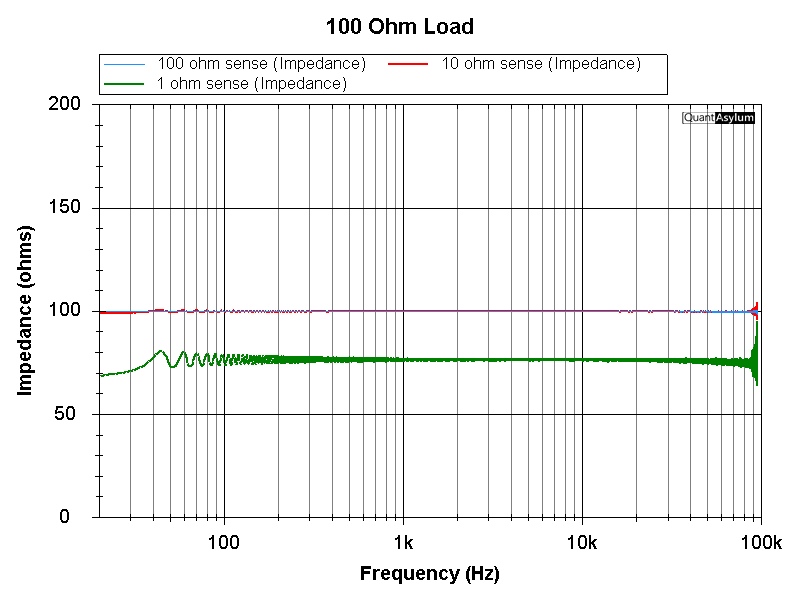There have been some questions on how to measure transformers using the QA40x. The transformer used here is THIS from Amazon. This transformer is designed for transforming a high-z tube output to a low-z suitable to drive a 4 or 8 ohm transformer. The specs indicate a 5KΩ input Z and a 4 or 8Ω output Z.
A 5KΩ primary and 4Ω secondary related to the turns ratio via:
And so the turns ratio is the square root of the impedance ratio:
And in dB, this is
Now, we know the large voltage on the high-z primary will be transformed to a smaller voltage on the secondary, and so the 30.96 dB will be a -30.96 dB (since it’s getting smaller).
Let’s look at the setup to drive the transformer:
The QA403 output is driving directly into the primary. This is fine, because we expect the primary is high-Z. But we might not know exactly the impedance, and the 100Ω output impedance of the QA403 may or may not influence the exact amplitude we’re driving across the transformer. For this reason, we take the output voltage across the primary and run that into the right channel. If we specify that we’d like to use the right channel as the reference in the measurements, then the loading on the QA403 won’t matter–it will all be referenced to the right channel.
On the secondary, note a 4 ohm load is connected. The transformer needs load to do its job. For this measurement, a resistance substitution box works well because it allows you to easily play around with the load and see how that impacts the flatness.
The test setup is shown below. Note the BNC T’s on the L+ and L- output. Scope probes are using to drive the primary balanced (note that ground clips aren’t used), and the secondary goes into the resistor substitution box and is measured single-ended into the left channel.
A sanity check was made with a DVM. A 1 kHz tone at 16 dBV was generated, and the output across the primary was measured at 11.84Vrms, and the output across the secondary was measured at 258mVrms. Note these measurements were made in IDLE mode to give a constant tone the DVM can measure. This gives:
Returning to the measurement using the QA403 instead of the DVM, we get:
Using the reported QA403 values we get
From this, we know our setup is correct. The values measured by the QA403 are more reliable than your handheld DVM. The goal in checking the with DVM is to ensure something big hasn’t been missed, like a 6 dB correction factor some place–these are easy to miss when making balanced measurements.
We can then run the Automated Test AMP Frequency Response Chirp with the following settings. we’ll drive at 0 dBV (which is actually about 6 dBV since we’re driving balanced) and we’ll plot the gain and the phase.

The resulting plot is below. We can see the output has rolled off about 3.5 dB at 20 kHz. We can also see the phase is 0 degrees at 1k, meaning we have the measurement polarity correct.
The gain at 1 kHz is -33.36 dB, which is within 0.02 dB what we measured using tones.
Now, recall above the transformer impedance winding ratio suggested the turns ratio would give a voltage transformation of:
But we measured -33.36 dB. The discrepancy here is likely the assumed primary impedance. We’ll measure that soon.











